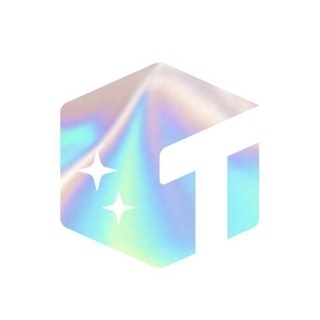
En lien avec la crypto
Calculateur de prix
Historique des prix
Prédiction de prix
Analyse technique
Guide d'achat crypto
Catégorie de crypto
Calculateur de profit

Prix de LIKELIKE
Que pensez-vous de LIKE aujourd'hui ?
Prix de LIKE aujourd'hui
Quel est le prix le plus élevé de LIKE ?
Quel est le prix le plus bas de LIKE ?
Prédiction de prix de LIKE
Quel sera le prix de LIKE en 2026 ?
Quel sera le prix de LIKE en 2031 ?
Historique des prix de LIKE (USD)
 Prix le plus bas
Prix le plus bas Prix le plus élevé
Prix le plus élevé 
Données de marché de LIKE
Historique de capitalisation LIKE
Avoirs LIKE par concentration
Adresses LIKE par durée de détention

Notes LIKE
À propos de LIKE (LIKE)
Cryptocurrencies, like Only1, have emerged as a revolutionary form of digital currency with significant historical significance. Only1, a cryptocurrency based on blockchain technology, offers a range of key features that distinguish it from traditional forms of currency.
One of the most notable features of Only1 is its decentralized nature. Unlike traditional currencies, which are controlled by central banks and governments, Only1 operates on a decentralized network, allowing for peer-to-peer transactions without the need for intermediaries. This decentralization ensures transparency, security, and eliminates the risk of censorship or manipulation.
Another notable feature of Only1 is its security. Built on a blockchain network, Only1 utilizes advanced cryptographic techniques to secure transactions and protect user's personal and financial information. The use of encrypted codes ensures that transactions are tamper-proof and provides a high level of anonymity, making it an attractive option for privacy-conscious individuals.
Only1 also offers fast and low-cost transactions. The blockchain technology underlying Only1 allows for quick and efficient transfers of funds, eliminating the need for traditional banking systems and their associated fees and delays. This feature makes Only1 an appealing option for individuals and businesses seeking to streamline their financial transactions.
Moreover, Only1 provides users with the potential for significant returns on investment. As is the case with many cryptocurrencies, Only1's value can experience significant volatility, offering opportunities for traders and investors to profit. However, it is important to note that investing in cryptocurrencies carries inherent risks, and individuals should conduct thorough research and exercise caution.
Cryptocurrencies like Only1 have also gained popularity due to their potential to disrupt traditional financial systems. By bypassing traditional banking institutions, cryptocurrencies offer individuals in underbanked regions or countries with unstable economies an alternative means of accessing financial services and participating in the global economy.
In conclusion, Only1 and other cryptocurrencies have become influential phenomena in the digital age. With features such as decentralization, security, fast transactions, and potential for investment gains, Only1 has the potential to reshape the financial landscape. As the crypto industry continues to evolve, it is essential for individuals to remain informed and understand both the opportunities and risks associated with cryptocurrencies.
LIKE en devise locale
- 1
- 2
- 3
- 4
- 5
Comment acheter LIKE(LIKE)

Créez votre compte Bitget gratuitement

Vérifiez votre compte

Convertir LIKE en LIKE
Trader des Futures perpétuels LIKE
Après vous être inscrit avec succès sur Bitget et avoir acheté des USDT ou des LIKE, vous pouvez commencer à trader des produits dérivés, y compris des Futures LIKE, et à trader sur marge pour augmenter vos revenus.
Le prix actuel de LIKE est de $0.01563, avec une variation de prix sur 24 heures de . Les traders peuvent tirer profit d'une position Futures LIKE long ou short.
Rejoignez le copy trading de LIKE en suivant des traders experts.
Actualités LIKE

Acheter plus
FAQ
Quel est le prix actuel de LIKE ?
Quel est le volume de trading sur 24 heures de LIKE ?
Quel est le record historique de LIKE ?
Puis-je acheter LIKE sur Bitget ?
Puis-je gagner des revenus réguliers en investissant dans LIKE ?
Où puis-je acheter des LIKE au meilleur prix ?
Où puis-je acheter LIKE (LIKE) ?
Section vidéo – vérifier son identité rapidement

Pages liées à LIKE
Tags:
Bitget Insights





Actifs liés



































Données sociales de LIKE
Au cours des dernières 24 heures, le score de sentiment sur les réseaux sociaux de LIKE est de 0.4, et le sentiment sur les réseaux sociaux concernant la tendance du prix de LIKE est Baissier. Le score global de LIKE sur les réseaux sociaux est de 158, ce qui le classe au 448ème rang parmi toutes les cryptomonnaies.
Selon LunarCrush, au cours des dernières 24 heures, les cryptomonnaies ont été mentionnées sur les réseaux sociaux un total de 1,058,120 fois. LIKE a été mentionné avec un taux de fréquence de 0%, se classant au 572ème rang parmi toutes les cryptomonnaies.
Au cours des dernières 24 heures, 0 utilisateurs uniques ont discuté de LIKE, avec un total de 12 mentions de LIKE. Toutefois, par rapport à la période de 24 heures précédente, le nombre d'utilisateurs uniques a diminué de 0%, et le nombre total de mentions a augmenté de 50%.
Sur X, il y a eu un total de 1 posts mentionnant LIKE au cours des dernières 24 heures. Parmi eux, 100% sont haussiers sur LIKE, 0% sont baissiers sur LIKE, et 0% sont neutres sur LIKE.
Sur Reddit, il y a eu 0 posts mentionnant au cours des dernières 24 heures. Par rapport à la période de 24 heures précédente, le nombre de mentions diminué a augmenté de 0%.
Aperçu social
0.4